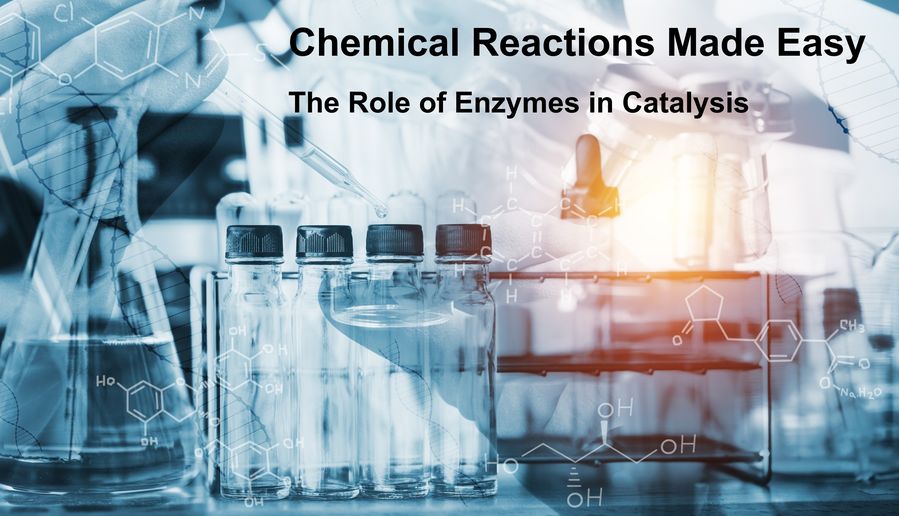Enzyme Catalysis
Enzyme catalysis is a procedure to increase the rate of virtually all the chemical reactions within cells by the active site of a protein. Enzyme may be part of a multi-subunit complex. It may also transiently or permanently conjugate with a cofactor. Theoretically, the mechanism of enzyme biocatalysis is similar to other types of chemical catalysis, where the enzyme is not consumed, but is recycled such that a single enzyme executes several rounds of catalysis. Additionally, reaction rates are enhanced by enzymes without altering the chemical equilibrium between reactants and products.
From the energetic point of view, the reason why an enzyme can accelerate a reaction is because it can provide a proper environment to lower the energy barrier (activation energy) that is required to reach the highest energy transition state of the reaction. Generally, only a few molecules have sufficient energy for reaction. The reduction of activation energy (Ea) leads to an increase in the amount of reactant molecules equipped with sufficient energy level, thus achieving the activation energy and generating the product. Catalysis of biochemical reactions in the cell is critical since the uncatalyzed reactions show very low reaction rates under the mild conditions of temperature and pressure that are compatible with life. A significant way to drive protein evolution is the optimization of such catalytic activities via protein dynamics. All enzymes take into effect by forming a transition state with the reactants, holding lower free energy than that found in the uncatalyzed reaction. Quite modest reductions in potential energy barrier could even produce large increases in the rate of reaction.
 Figure 1. The free energy profile of an enzymatic reaction. (Gerlt J A. 1994)
Figure 1. The free energy profile of an enzymatic reaction. (Gerlt J A. 1994)

|
There are a number of mechanisms that are applied to decrease the activation energy and the exact mechanism of lowering the energy barrier is dependent on individual systems. The most important one of these mechanisms refers to initial binding of enzyme to the substrates in the correct orientation to react, being close to the catalytic groups on the active enzyme complex and any other substrates. In this manner, the binding energy is partially used to reduce the involvement of the excessive activation entropy caused by the loss of the reactants' and catalytic groups' translational and rotation al entropy, in the overall activation energy. The energies available for enzymes to bind with their substrates are primarily dependent on the complementarity of structures. |
Catalytic Characteristics of Enzymes

|
Enzyme is highly efficient since a single molecule of this catalysis can transform a million molecules of the reactant per second. This kind of biochemical catalysts is unique in nature and the same catalyst cannot be used in more than one reaction. Enzyme catalysis could achieve maximum effectiveness at mild reaction temperature and solution pH ranging between 5-7 pH values. The catalytic activity of enzymes could be actively regulated by a coenzyme or an activator such as Na+, Co2+, which could form a weak bond with enzyme to increase the reaction rate. |
Chemical Reactions Made Easy: The Role of Enzymes in Catalysis

|
Enzymes are nature's catalysts, accelerating chemical reactions with remarkable precision and efficiency. Explore how enzymes lower activation energy, facilitate biochemical transformations, and drive essential biological processes. Understanding the mechanisms of enzymatic catalysis provides valuable insights into metabolic pathways, industrial applications, and advances in biotechnology. |
Reference
- Gerlt J A. Protein engineering to study enzyme catalytic mechanisms. Curr Opin Struct Biol,1994, 4(4):593-600.
Related Services
Enzymology Assays
Enzyme Catalytic Mechanisms
Screening of Substrates, Inhibitors, and Other Ligands
Biocatalysis Services
To discuss more service details, please contact us.